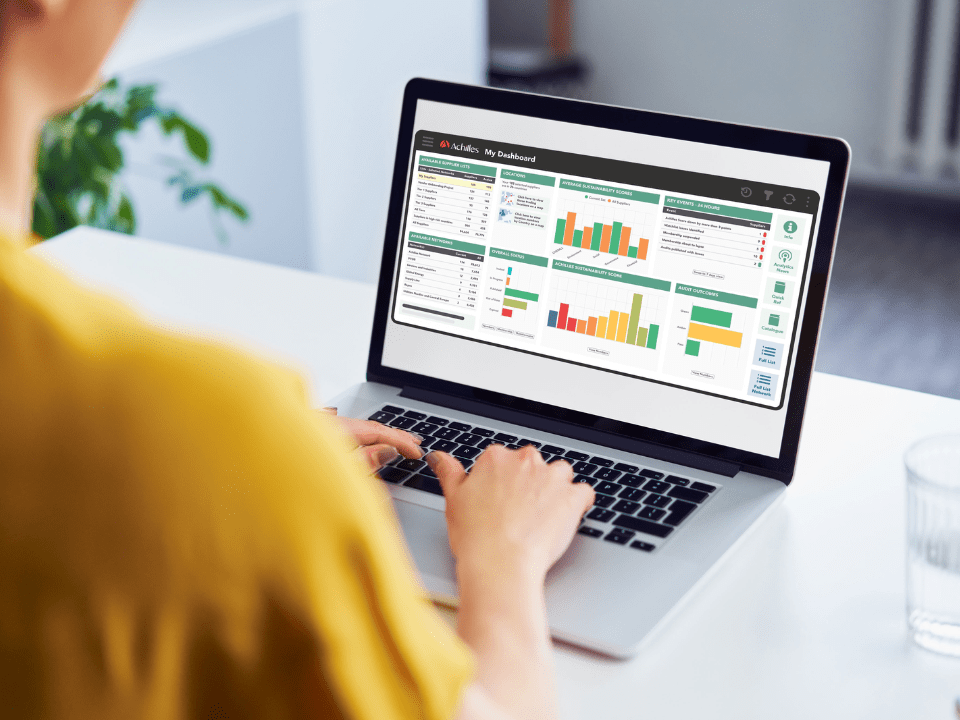It has never been easier for a company to connect to the global economy. Buyers and suppliers can contact, collaborate and harness the expertise and skill of people all over the world. While this creates lots of opportunities, it can also open them up to the risk of supply chain disruption.
From extreme weather to political, economic and social events, markets around the world are often unsettled by factors far outside the control of the average single company. What should a supply chain risk manager (SCRM) consider when managing financial risk in their supply chain and minimising the impact of external problems that affect a company’s business continuity plans?
The impact of supply chain disruption
Supply chains are growing in size and complexity, as is the task of effectively managing and monitoring the associated risks. Inflation in Argentina, continuing economic turmoil in Venezuela, Brexit uncertainty in the UK and Europe, as well as trade tensions between the US and China are all examples of the unpredictable financial risks supply chains are currently being exposed to.
These events may seem remote, but with profit margins at historically low levels and geopolitical uncertainty seen in all corners of the world, the risk of supply chain disruption is very real.
Disruption of this kind is more common than many think too. Data from Vuealta shows that 90% of companies have experienced supply chain disruption in the last five years. The Business Continuity Institute Supply Chain Resilience Survey (2017) highlighted that these risks often come from Tier 2 and below. Some 65% of respondents suffered at least one significant supply chain disruption in the previous year, but only 44% of these originated at Tier 1. Alongside the failure of a single supplier – natural disasters, cyber-attacks, political upheavals and trade wars are the top risks SCRMs say are impacting their global supply chain management. All of these could result in insolvency in a supply chain as suppliers become unable to operate or honour their obligations. For supply chains that lack capacity or effective business continuity planning, the effects of negative change can be felt almost instantly.
Clearly, the task for SCRMs looking to effectively manage the risks the financial risks their supply chains face is a difficult one. Here are two essential steps they need to take.
Identifying and understanding risk
Companies are never going to be totally free from exposure to risk, but there are some important ways to anticipate and limit future supply chain disruption.
SCRMs have several tools at their disposal to help them identify and understand the financial risks they face. Only working with suppliers that have been pre-qualified is a good starting point. This can help give you confidence about the financial resilience of your suppliers and ensure they have appropriate continuity plans in place. Supplier scoring and tracking is an important way of making sure that the focus is always on the quality of the service being provided rather than relying on other metrics like price. By establishing the performance indicators that matter to them, SCRMs will find it easier to maintain strong relationships with important suppliers, flag potential issues earlier and drop companies that consistently underperform or present too much risk.
Regularly reviewing the financial and business performance of your suppliers is essential. Only looking at the service or products they provide won’t give you the full picture of their resilience to external factors. For example, our data shows that in 2018, 15% of suppliers had negative profit margins and 14% had a liquidity ratio below 1, meaning their debts due within a year or less were greater than their assets. Financial issues are often the root cause of deteriorating supplier performance, and something they will often try to hide from customers and buyers for as long as they can. Top tier suppliers may also be taking the brunt of problems lower down the supply chain, with buyers only able to see late deliveries and decreasing quality from tier 1. This lack of supply chain visibility is a key driver of risk, hampering a buyer’s ability to anticipate and mitigate disruption.
Identifying stress points and potential weaknesses should extend beyond individual companies. SCRMs should also try to keep an eye on particular regions, industries or countries as well.
Monitoring and managing risk
Knowing the things that could cause supply chain disruption is only one part of the puzzle though. Putting in place real time monitoring is essential, alerting SCRMs if there is a change that warrants their attention. Getting the right system in place allows SCRMs to focus on strategy instead of spending all their time reading news stories and financial reports. Risk management is a big part of global supply chain management, but it is not the only part. SCRMs need to make sure they don’t neglect the other parts of their role, making real time monitoring a vital asset.
There are some other steps SCRMs can take today to manage financial risk in their supply chains:
- Request audits of specific suppliers
- Check your contracts for protection against supplier insolvency
- Identify alternative pre-qualified suppliers for high risk commodities and services
- Monitor individual companies for signs of stress – particularly deteriorating quality/service, attempts to renegotiate price, requests to modify terms of payment or inconsistent stock levels
There is no getting around it, the risk of insolvency in supply chains rises in periods of uncertainty. SCRMs need to try their best to stay informed and identify issues before they cause supply chain disruption. This may sound like a huge ask in terms of time and resources, but we can help.
We have the tools and expertise to help companies all over the world improve their operational effectiveness, resilience and global risk management. Our solutions will help you identify potential sources of disruption, and create effective business continuity plans that protect your company from its worst effects.
Contact us about how we can help with your global supply chain risk management today.


